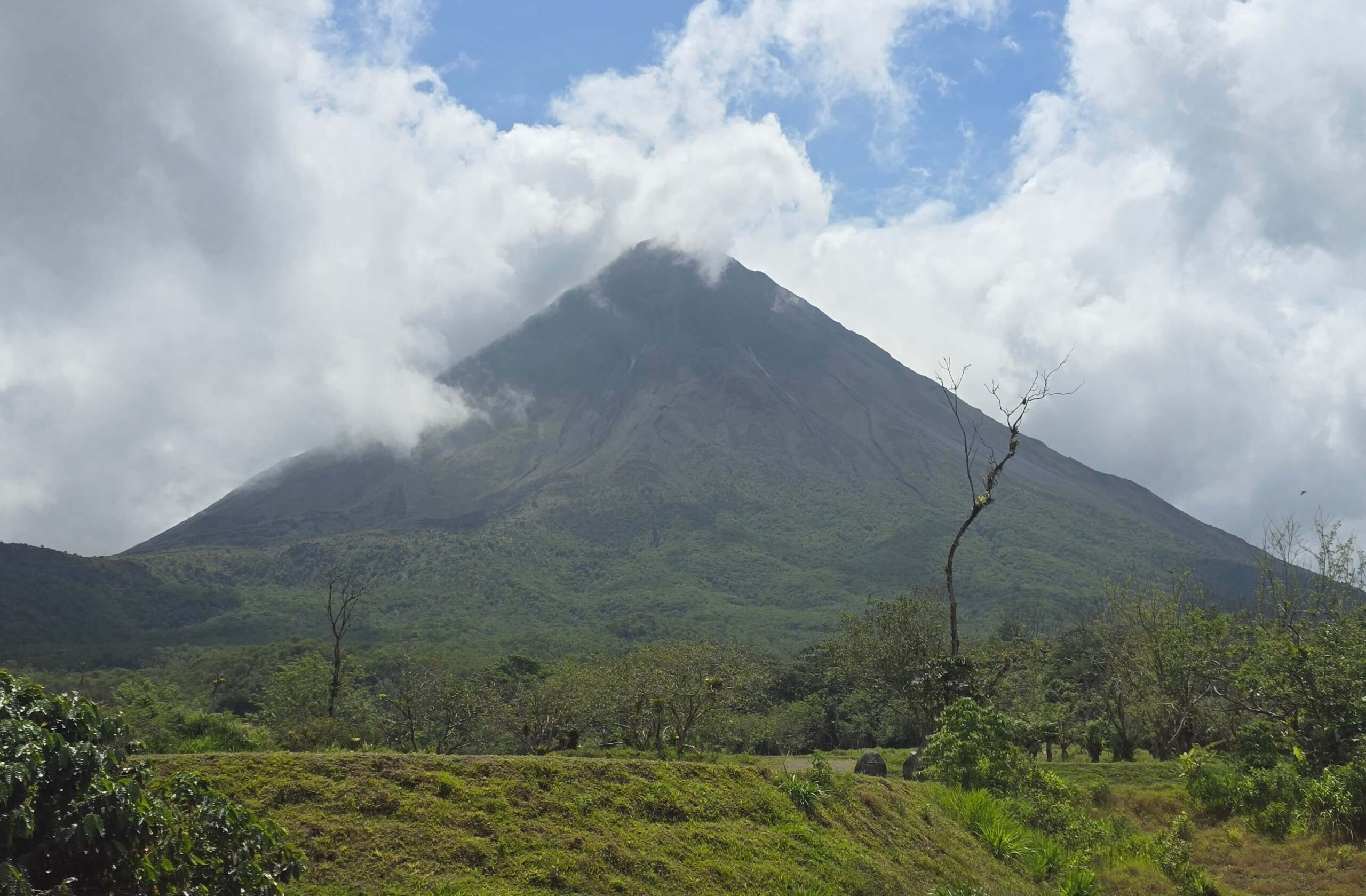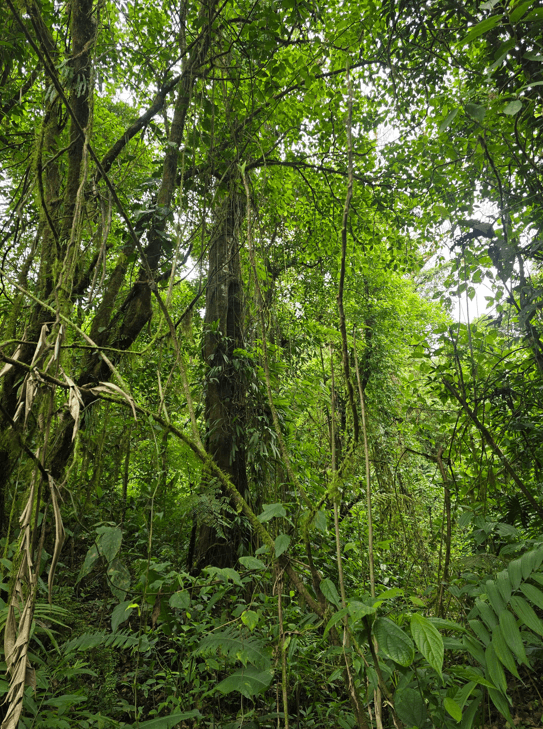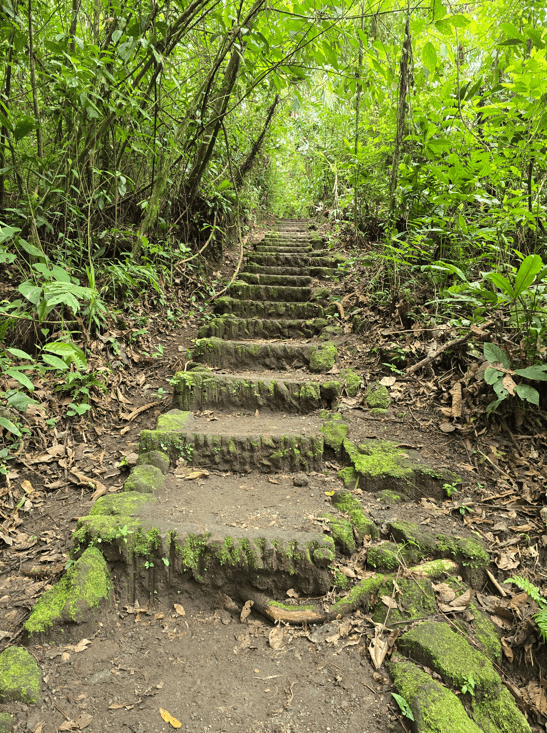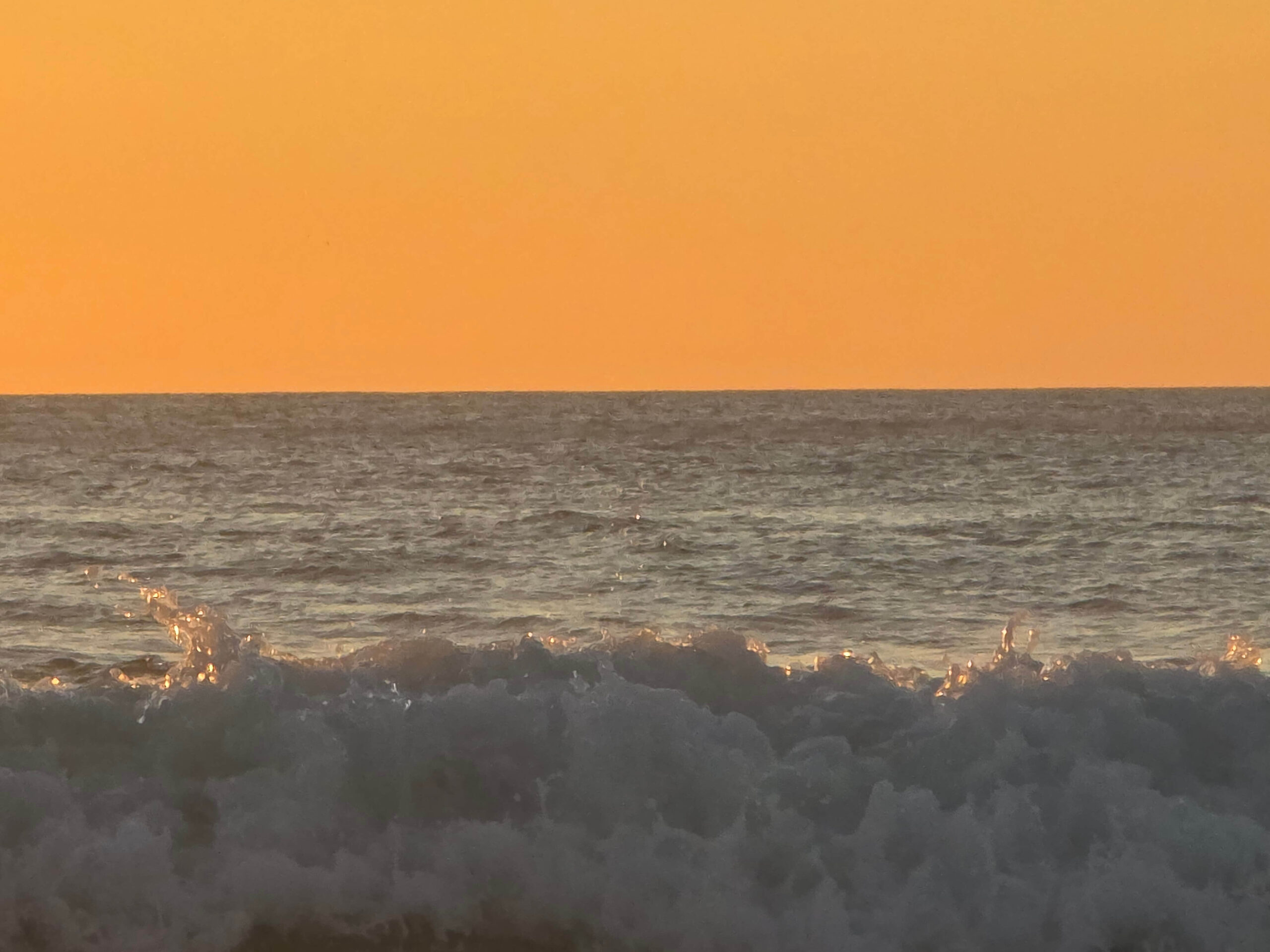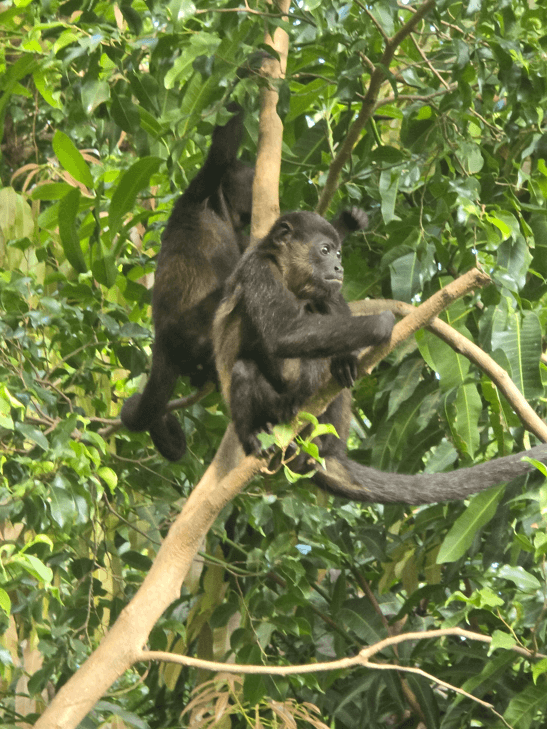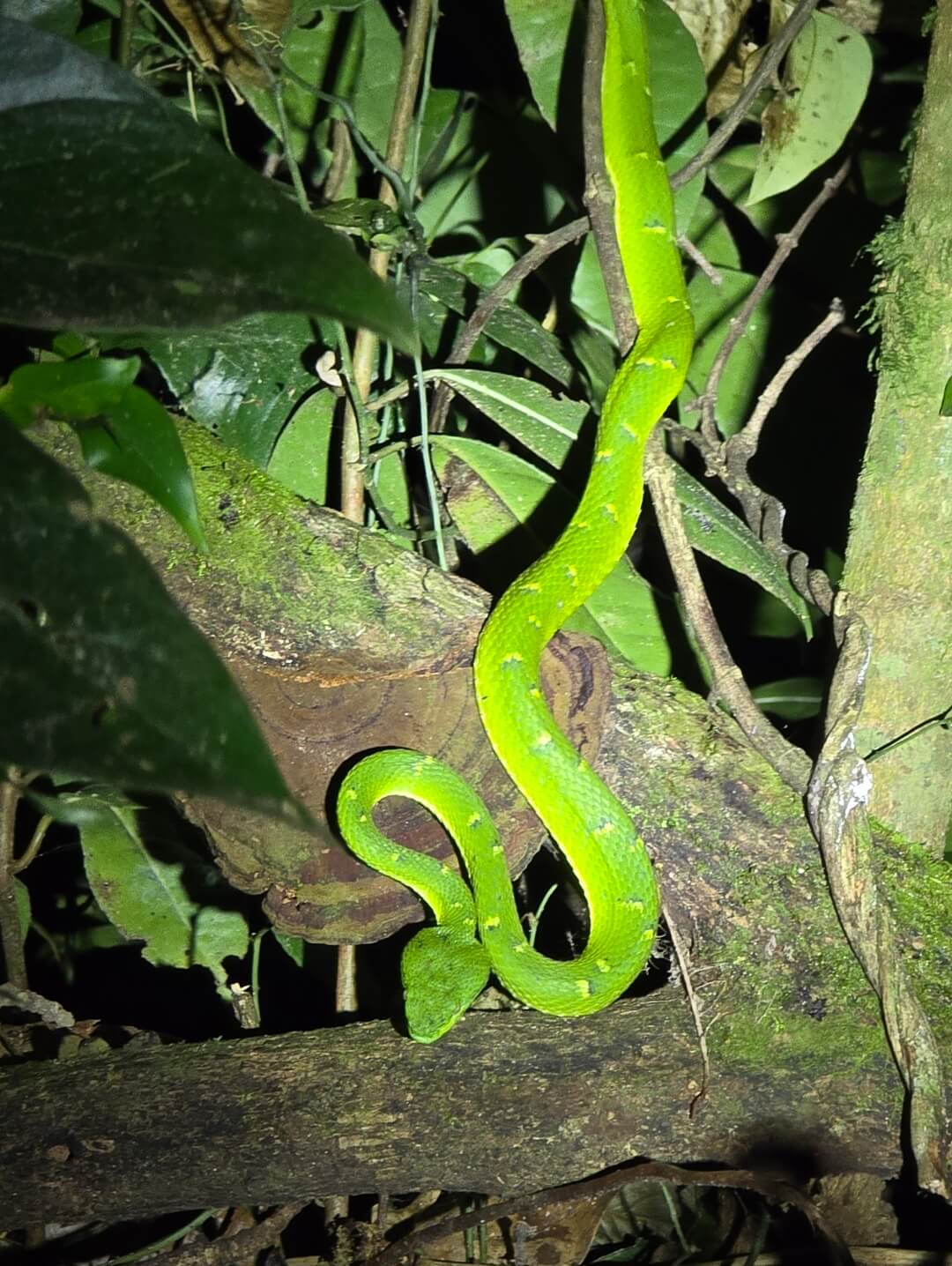From Volcano Trails to Cloud Forests: A Costa Rica Adventure Through Sheena’s Eyes
Sometimes, the best trips start with a simple recommendation. That was the case for Golden Software Product Manager Sheena Skinner, who traveled to Costa Rica with her partner after hearing glowing reviews from friends who had visited. What she found there was more than just a beautiful destination; it was a place teeming with biodiversity, breathtaking landscapes, and unforgettable moments. To see the trip through her eyes, we’re unpacking Sheena’s journey to discover the many wonders of Costa Rica—from rainforests to rare wildlife—and hearing why the country quickly became one of her all-time favorite places.
- Let’s start with your general impressions—how was your trip overall?
- One of the places you visited in Costa Rica was La Fortuna. How was it?
- How was the 1968 Lava Trail?
- What’s the ecosystem like on the 1968 Lava Trail?
- You also explored the Monteverde Cloud Preserve. What was your experience like?
- Where else did you visit in Costa Rica?
- What was the plant life like in Costa Rica?
- What was the wildlife like?
- If you could create one visual in Surfer or Grapher inspired by your trip to Costa Rica, what would you design?
- A Journey That Left a Lasting Impression
Let’s start with your general impressions—how was your trip overall?
It was incredible! I connected deeply with the ecofriendly atmosphere and the country’s commitment to conservation—you can feel it everywhere. Costa Rica is one of the most biodiverse places on Earth, and the locals take real pride in protecting and restoring that biodiversity. Ecotourism is a major part of their economy, so they’ve created a model where preservation and prosperity go hand in hand.
The people were warm and welcoming, and the food was on another level—the fruit especially. It’s hard to describe how much better it is there. Imagine picking the perfect raspberry off a bush; that’s what every mango, banana, and papaya tasted like! I’ve never experienced anything quite like it.
Also, the coffee? Simply amazing. I’ve always doctored mine up, but after trying it fresh in Costa Rica, I started drinking it black. And it’s not like I drank bad coffee or anything. It just wasn’t as high quality as what we had there! Now we only buy Costa Rican coffee. It’s that good.
One of the places you visited in Costa Rica was La Fortuna. How was it?
La Fortuna was stunning! It sits near Arenal Volcano, which is this perfectly shaped stratovolcano—and we had a great view of it from where we stayed. It was gorgeous! The weather was even nice enough to give us a full day’s worth of viewing, which is something not every tourist gets to say due to almost constant cloud coverage. We did a lot of hiking in the area, including the 1968 Lava Trail, which was one of the highlights of our trip.
The volcano erupted violently in 1968, killing 87 people and burying three villages. La Fortuna, which means “The Fortune,” got its name because it was spared in the eruption. It was fortunate compared to surrounding villages. The story—and the landscape—stayed with me.
How was the 1968 Lava Trail?
It was a great hike with several route options offering varying degrees of difficulty. The three trails on the hike we took included a green, a yellow, and a red trail. The green one? Anyone could have done it. The yellow trail was longer and had a few challenges. We also decided to take the red trail, not quite realizing how long or challenging it would be (the length markers were in kilometers so we didn’t really understand how long the red trail would be—it’s definitely not for casual hikers).
Luckily, we’re used to hiking in the Rockies, but this one was tough mostly because of the terrain. Lava rock doesn’t weather like sedimentary rock does. It’s sharp, uneven, and unforgiving. So it’s really hard to step on. That was the hardest part—just what we were walking on.
What’s the ecosystem like on the 1968 Lava Trail?
Costa Rica has a bunch of micro-ecosystems, and this trail really showcased that. It started fairly open with scrub and a few trees, but as we progressed—especially on the red trail—it transitioned into dense jungle. It was awesome! The soundscape changed, too. At one point we heard something in the distance and wondered, half-jokingly, if it might be a cougar. It was wild—literally!
You also explored the Monteverde Cloud Preserve. What was your experience like?
Monteverde was unforgettable. Cloud forests cover less than 1% of the Earth’s surface and occur only under very specific conditions. In Monteverde, cool Pacific winds collide with warm Caribbean air at the Continental Divide, creating a constant mist that feeds a lush and unique ecosystem. It’s also untouched, so it’s still all natural as opposed to reforested.
It’s one of the most biodiverse places I’ve ever seen. There are tiny orchids, giant ficus trees, and species that exist only within that microclimate. It’s super beautiful, but it’s also very endangered because of climate change. A 2019 study projected that up to 60–80% of Western Hemisphere cloud forests could shrink or dry out within 25 years, turning into rainforests. That may sound benign, but the shift would eliminate the specialized conditions many species need to survive. And our tour guide at the forest said that the situation was even worse than they had imagined back in 2019.
The Resplendent Quetzal, for example, is an iconic species in decline due to climate change. We were told that there are very few active nests remaining in Monteverde, and that seeing a Quetzal used to be a sure thing on a Monteverde tour. Now, however, many tour groups don’t get a chance to witness one at all, even if they hike for hours, although we were extremely lucky and did get to witness a male and hear its very unique call! But it’s obvious that the clock is ticking—and preserving this environment is critical for many endemic species.
Where else did you visit in Costa Rica?
We visited Tamarindo on the Pacific coast, which is much more touristy—but also really fun. The beach is wide, the waves are strong, and it’s a popular spot for surfing. I’m originally from the East Coast, where the waves are itty bitty, so experiencing big waves and taking a surf lesson was amazing!
One thing we didn’t realize until afterward is that crocodiles can be a concern near river mouths where they connect to the ocean. During high tide, seawater pushes inland and links the rivers with parts of the beach, creating areas where crocodiles may be present. In 2016, a surfer near Tamarindo was attacked by a crocodile but survived, and the incident led to increased public awareness. Today, warning signs advise visitors to avoid exploring upriver from the beach. Locals, somewhat casually, refer to them as “crocodillies”, which we found endearing for how dangerous they can be. We didn’t see any ourselves, but we took the warnings seriously!
Also, the seashells there were incredible—unlike anything I’ve found on U.S. beaches.
What was the plant life like in Costa Rica?
I fell in love with the different types of trees. They’re so different from anything we have here in the U.S., which was really phenomenal. They even had a type of evergreen, which was surprising.
I especially loved the strangler fig, or Ficus tree. It starts its life high in the canopy, where birds drop the seed onto another tree. Then it sends its aerial roots down to the ground and eventually encases the host tree entirely. And sometimes the roots braid on their own—it’s super neat! They act like little highways for the animals.
Over time, the roots eventually get big enough that the host tree dies. The host tree will rot out, and these Ficus trees become hollow on the inside, making new homes for even more animals, which is really cool. They look like something out of a sci-fi movie!
What was the wildlife like?
The wildlife was everywhere. We took a guided night hike and spotted a green Side Striped Palm Pit Viper. Costa Rica has a variety of venomous snakes, but strong medical infrastructure and readily available antivenoms mean serious incidents are quite rare.
Beyond that, we saw an incredible range of animals in their natural habitats. Two-toed sloths were a favorite—we even got to witness a baby sloth with her mom! We also saw howler monkeys calling out from the treetops, which was surreal. Their calls carry for miles and sound almost otherworldly. They sound like they might be mean or aggressive, but they aren’t at all!
One of the most unexpected moments was seeing an anteater high up in a tree—something I never thought I’d witness. We also came across coatis, which are raccoon-like mammals with long noses and striped tails. They often travel in groups and are surprisingly curious and bold around people.
And of course, the Resplendent Quetzal stood out as one of the most beautiful and rare creatures we learned about. Overall, there was so much wildlife there—it was crazy. But I think I was most excited about the Costa Rican Red Leg Tarantula we saw in Monteverde. It was really cute!
What stood out to you about the geology and geography in Costa Rica?
Costa Rica’s geology is dominated by volcanic activity. It lies on the Pacific Ring of Fire and has about sixty volcanoes, six of which are currently active. The terrain is mostly igneous, which contributes to the soil being fantastically mineral-rich, as well as the abundance of natural hot springs.
Geographically, it’s incredibly diverse and really interesting. We drove from Liberia to La Fortuna, Monteverde, and Tamarindo, and in that loop alone, we passed through what felt like six or more distinct ecosystems. That’s consistent with the fact that Costa Rica has twelve different ecosystems overall. The terrain, vegetation, temperature, and even animal presence would change drastically within just a few hours of driving. The changes were very sudden too—the landscapes, the types of trees, the animals, and the temperature would change as if you crossed an invisible barrier. It was really interesting! I’ve never been anywhere that was that diverse.
What did you learn about the history of Costa Rica that you found fascinating?
Because I’m a history nerd, of course, we looked into this. Costa Rica is very interesting because we know a lot of things about the Aztecs, the Mayans and the Incas. But none of those large Mesoamerican civilizations extended into Costa Rica. Instead, Costa Rica developed its own smaller, more dispersed cultures. Originally, I was like, “Okay, cool. Where are the ruins? Everywhere in Latin America has ruins.” Well, in Costa Rica many ancient structures were built using perishable materials like clay and wood, so there aren’t monumental ruins like you see elsewhere.
That said, there are still vibrant Indigenous communities living in Costa Rica today. We didn’t visit a village, but we did meet a local medicine-man who showed us the medicinal plants growing in his garden. It was a crash course in natural pharmacology! We learned, for example, that termites are edible and protein-rich, which is handy survival info! And we tasted fresh cacao, which was surprisingly refreshing and completely safe to eat raw.
If you could create one visual in Surfer or Grapher inspired by your trip to Costa Rica, what would you design?
I’m so glad you asked this because I already thought about doing it! I think it would be really cool to do a journey map of where we went and where we hiked and include pictures of all the different places we visited. I haven’t figured out exactly what it’s going to look like, but I want to do it anyway just because it’s fun and a cool keepsake from our trip.
Another idea is a visualization of Costa Rica’s forest regrowth. In the late 1980s, forest cover was down to about 21% due to widespread deforestation. Today, it’s climbed back to nearly 60%, making Costa Rica one of the world’s top reforestation success stories. I’d love to represent that transformation visually—it’s a hopeful narrative, and one worth sharing as a success story of how we as humans can be better land stewards.
A Journey That Left a Lasting Impression
From hiking across hardened lava trails to wandering through untouched cloud forests, Sheena’s Costa Rican adventure is a reminder of just how awe-inspiring the natural world can be. Her story highlights the incredible biodiversity, vibrant culture, and powerful conservation efforts that make Costa Rica such a special place—not just to visit but to learn from. So whether you’re a geoscientist, nature lover, or simply someone planning your next vacation, consider visiting Costa Rica if you haven’t already to see how nature, sustainability, and curiosity collide.
If Sheena’s journey has sparked your imagination, subscribe to our blog! We’re always sharing firsthand adventures, scientific stories, and behind-the-scenes looks into the work we—and our users—are doing around the world.
Subscribe to Our Blog

